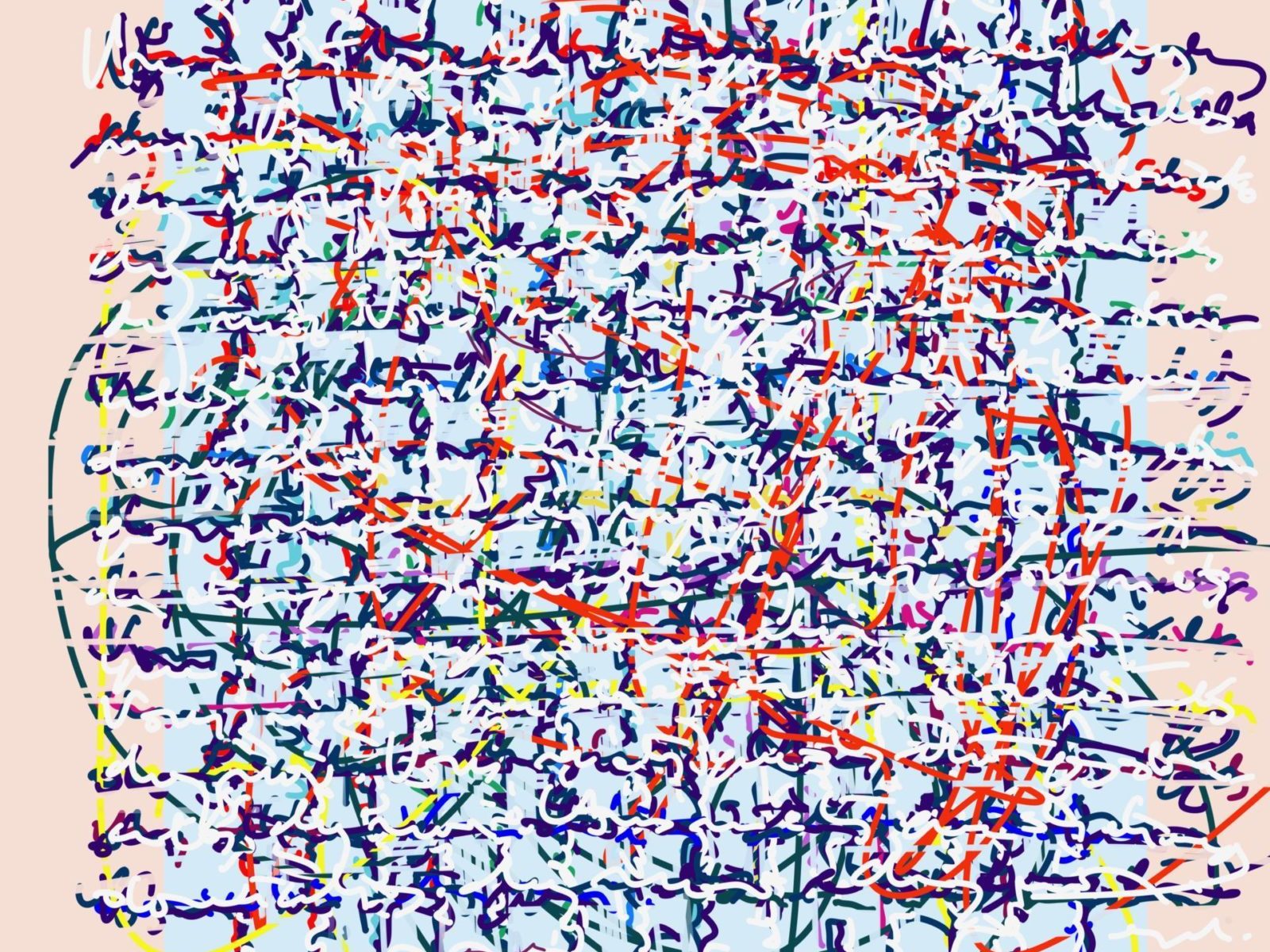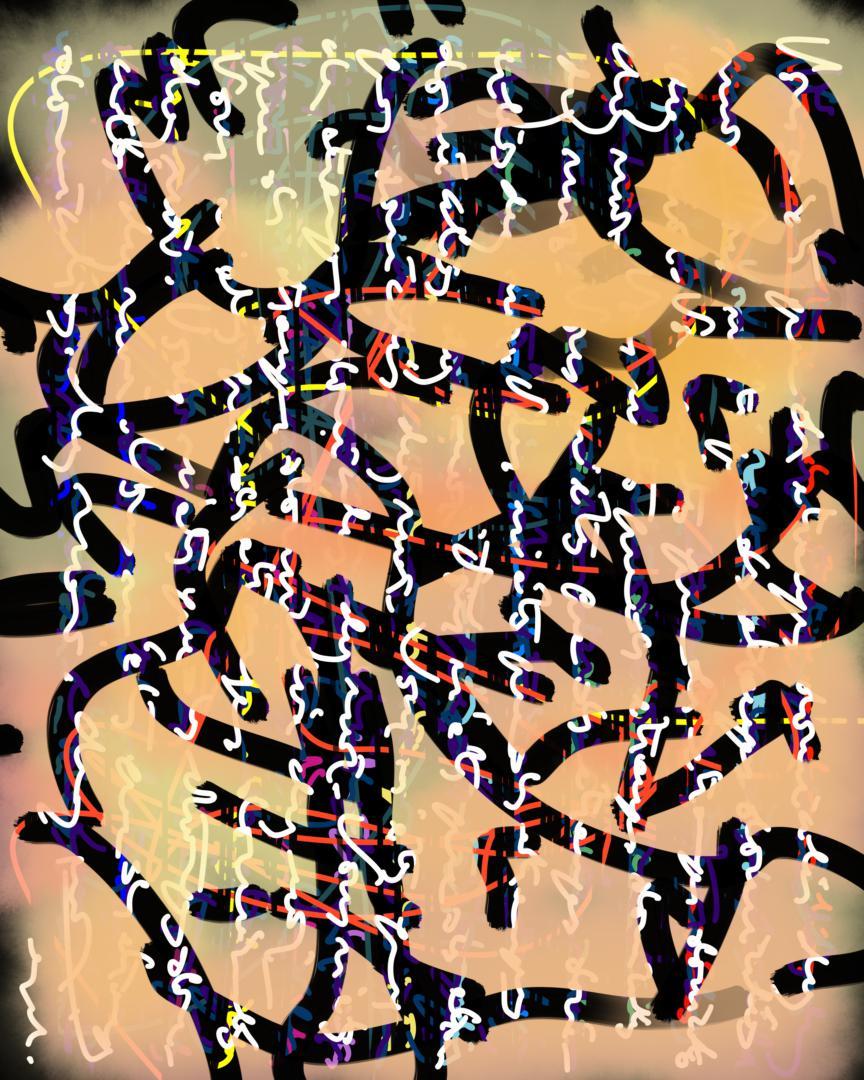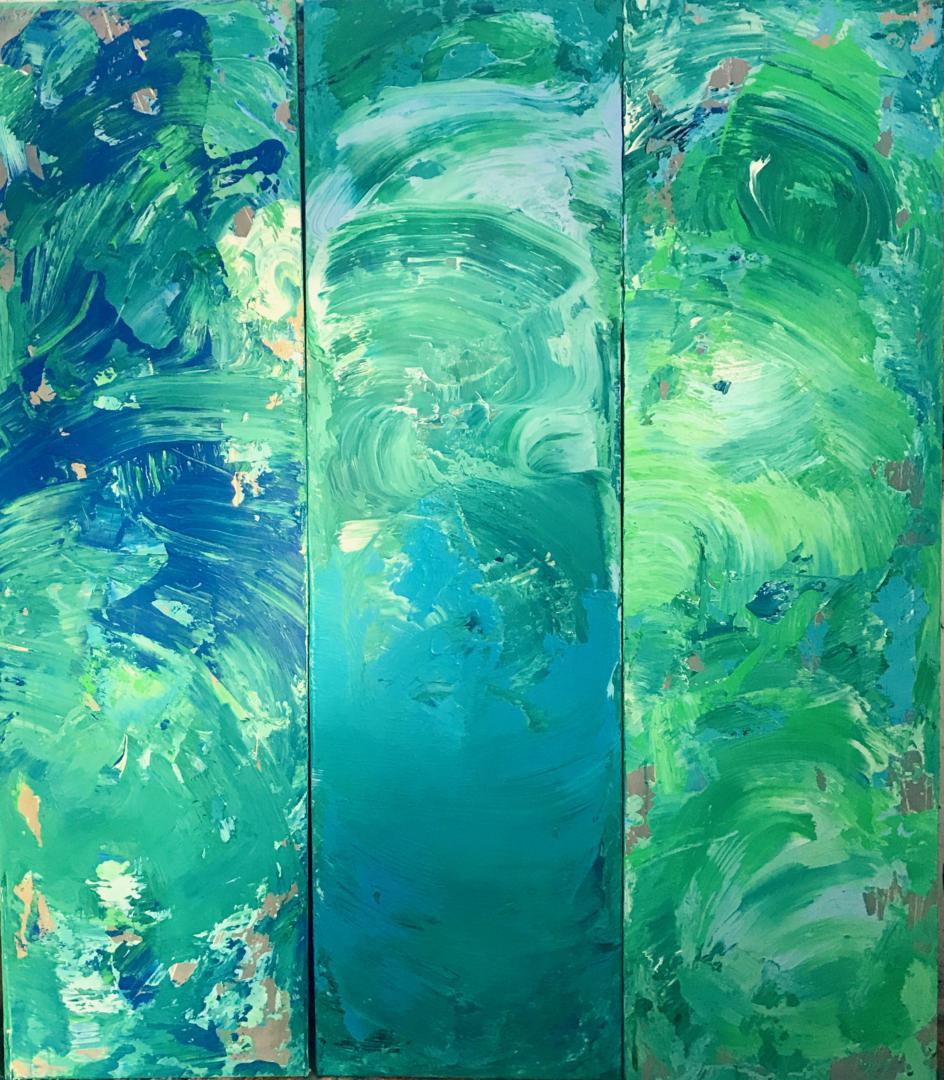Parallel to your works according to a usual process (paintings on canvas) you started in painting by a computer In painting does the evolution of the painter correspond to the evolution of the expectations of the public? Why this new direction? Is the sensuality of the painting brush spread out, do not you miss in this way of working the color?
These last two questions give me the opportunity to answer the question “how to paint? ” acrylic or digital? During my visit to the exhibition in Beaubourg of the painter David Hockney in 2017 I discovered the painting on IPad and I wanted to test its potentialities. It takes a period of adaptation to the tool, especially to mourn the classic feelings of painting on the web that no longer exist. There are also the famous spots that no longer fall from the sky. We no longer have that sense of space to conquer and appeal to a blank canvas. On the other hand, the digital technique first brings the possibility of having an absolutely unlimited color palette with very bright colors. Moreover, the possibility of directly transposing all existing natural colors is an extraordinary advantage, because the classical painter or simply pure colors and in this case has a necessarily limited range or is forced to make mixtures of colors according to rules accurate. With digital we can explore images that exist through digital files.
We can do photomontages. For example I’m going to do a digital work whose title will be “the ghost of the artist”. I will symbolically represent the artist who totally invests his work. To do this, I photograph the floor carpet on which a number of canvases have been painted. On this carpet strewn with stains of paintings, vestiges of numerous works of painting, is posed a pair of shoe of the painter. This enlarged photo in large format 130 * 162 is glued on a hard and rigid material such as aluminum or on a canvas mounted on chassis and the latter, when done well, can deceive the enemy as they say 🙂 These are among other things the kind of fun and creative fantasies that digital technology allows. Another advantage for the amateur is the ability to acquire the work in the format he wants: S, M, L or XL. We can work in limited edition to 8 copies, which lowers the purchase price. If I am outside the workshop for example, or traveling for example IPad is perfect, because it allows to take with you all the colors of the world, much more than in the richest palette of classic painter . The hands are always clean, it’s a significant advantage 🙂 At the level of “Faktura” as said the ancients, some might regret the absence of texture representation. In fact I will test during my next exhibition Art Shopping at the Carrousel du Louvre next month the reactions of the public. It will be a first! But in any case I would abandon the canvas for IPad and vice versa. From now on, from canvas to IPad and from ipad to canvas, I am, I paint.



